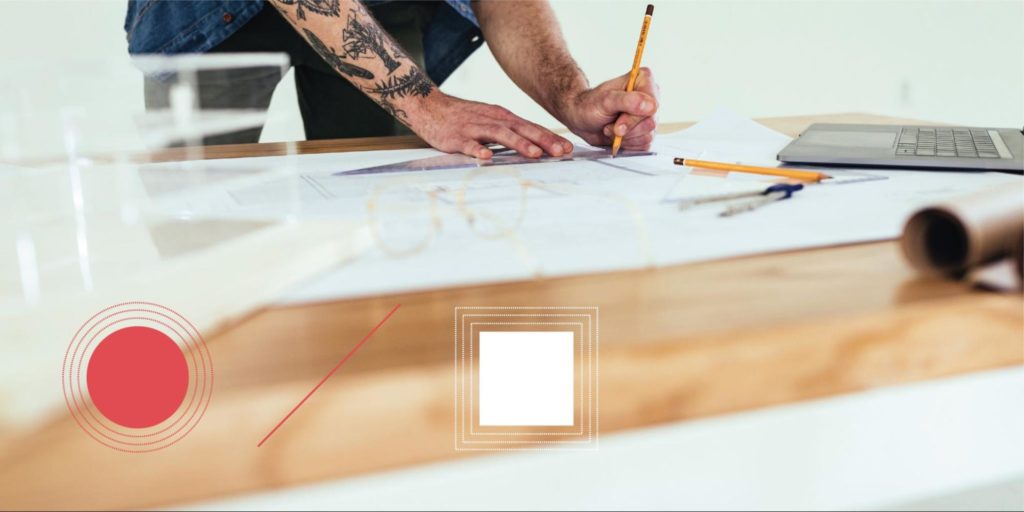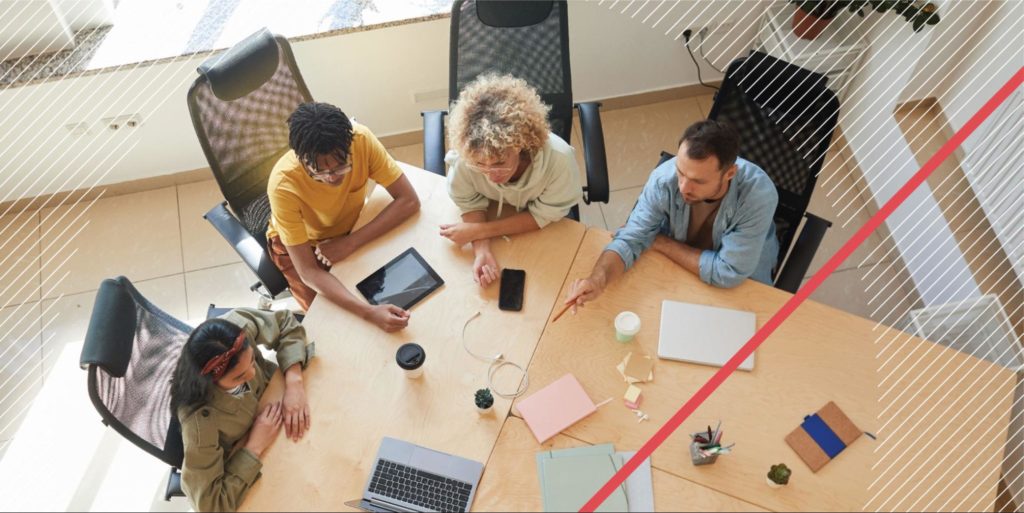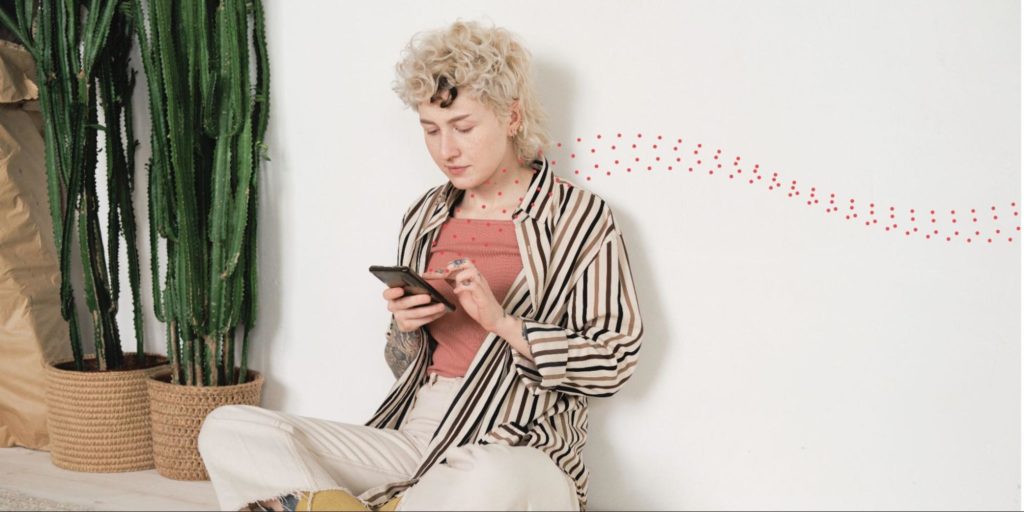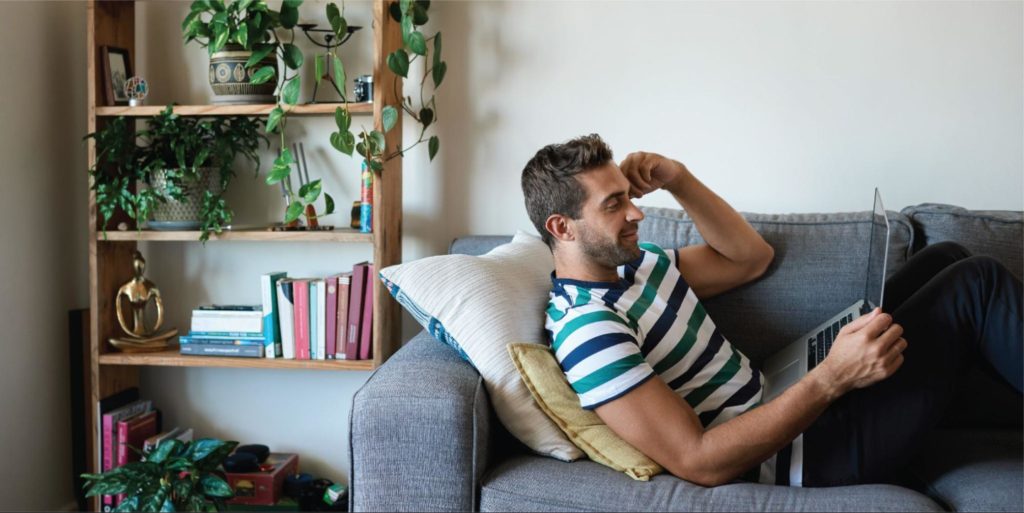
What is product design? The work of a product designer
Product design is focused on the development and ongoing maintenance of products to be sold to customers.
Digital product design takes the product design discipline and applies it to the creation of products that exist in digital spaces, such as websites, mobile applications, and computer programs.
As with conventional product design, a digital product designer needs to be focused on all angles of a product, such as:
- What market does it serve?
- Will it be a safe and reliable option for customer use?
- Is it likely to remain competitive in the long-term?
- Or will it be subject to heavy competition or just become obsolete?
Because product designers need to understand their products and industry through every lens – design, sales, marketing, support – they can sit at the hub of a company’s operations and be highly visible and respected members of the team.
With the ongoing rise in new mobile applications, interface devices, and the internet of things, there is no question that digital product designers will continue to play a central role in the life of companies ranging from startups to Fortune 500 companies – and will continue to shape the new experiences we have with our computers, mobile devices, and any future technology.
What is a product designer?
Product designers are responsible for the overall design and health of a product. The product designer is focused on ensuring that the digital product is easy to use, functional, and provides a good user experience while also meeting the business goals.
A product’s life cycle begins when someone decides to build a product to fill a customer need. It could be a product for an established market, such as an app game users will download via their Apple or Android smartphones. Alternatively, it could be a groundbreaking new idea for a digital service or tool that builds an entirely new marketplace. Or perhaps it will be a digital product that works with a new physical product, such as software to drive functionality for a surgical health implant.
Regardless of the focus, product designers will work with teams including product management, sales, engineering, and executive management to determine the overall goals and objectives. Their work will incorporate the user experience (front-end) of the product, as well as the user interface (back-end elements) that make it function.

Product design vs. UX design
The three greatest distinctions that separate a product designer from a UI/UX designer are business awareness, versatility, and oversight— and both are reasons that product designers are often paid more than UX/UI counterparts. Here are some examples:
- Business awareness: UX/UI designers devote their time to focusing on user-centric factors like usability, customer demand, and product inefficiencies at the consumer level, but product designers have a different orientation. Inclined to consider how their business can optimally build the goods UX/UI designers create, product designers focus their efforts on both production questions like cost-effectiveness and how their products will impact the user.
- Versatility: Possessing a wider skillset than UX/UI designers, product designers may be thought of as a kind of full-stack/managerial hybrid, overseeing product development from end to end. That means they may be called upon to code, conduct market research, manage projects, problem solve, coordinate between departments, and more.
- Oversight: Empathize, Define, Ideate, Prototype, and Test — product managers are responsible for all five phases of the design thinking process and take possession of the product roadmap, too. That means they must not only lead pre-development stages of design but must also follow the product’s progression after it hits the market to identify new needs.
So, while product designers still use their development expertise and technical skills to bring digital products to fruition, they are more often responsible for managing the entire product journey as it goes from concept into reality — and beyond.

What are the key responsibilities of a product designer?
Once a product concept is approved for design, the product designer’s role begins to take center stage.
The combination of technical skills (like coding and web development) and business intelligence (required for project management) means that product designers must meet demands from both creative and oversight departments. If you become a product designer, don’t be surprised if you’re asked to generate wireframes and mockups to assist with front-end development one day, and to create deliverables like customer journey maps the next.
On the managerial side, a few responsibilities of a product designer include:
- Consulting with PMs, engineers, researchers, and other members of your team to identify areas of improvement and where the product design is going.
- Conducting market research to understand user pain points and how they can be resolved.
- Identifying best practice modes of production and cost-saving opportunities.
- Performing competitive analysis to see how your brand can distinguish itself from the crowd.
On the technical side, product designers may find themselves performing the following tasks:
- Coding. There are differing opinions on whether UI/UX designers need to code, but if product designers are to carry their products across full-stack development, some coding — perhaps with JavaScript, HTML, or CSS on the front end, or Ruby or Python on the back end — may very well be needed.
- Model creation. Whether it’s a low-resolution wireframe or a pixel-precise prototype, product designers will be expected to take the lead in iterative model creation until the final design is right — and they’ll need the tools expertise to do it.
- Design optimization. By conducting A/B testing and user interviews to see what customers prefer and keeping their eye on the cost of design, product designers tailor their models both to industry requirements and user preference.
So whether it’s technical or managerial, your responsibilities as a product designer may vary by the day.
What skills do I need to master as a product designer?
By now you can see that product designers must possess a very diverse skillset. Coding and web design might be a few of your technical skills, but you’ll also need to develop a keen business awareness so that you can design your products for optimal business efficiency. Product designers work on teams consistently, so soft skills like clear communication and the ability to work well with others will be a must too.
To become a product designer, expect to master these skills and more:
Top-Level Design and Architecture
Product designers will need to map out a view of the proposed product at the “30,000 foot level”, spelling out some of the major design decisions that will guide its development.
Some questions asked at this stage may include:
- What platforms will the product be available on?
- What coding languages will likely be used, and why?
- Is there a need for special data sources, extra security, or the involvement of a major licensing partner to secure platform access or rights to popular creative material?
- When does the product need to be ready?
Detailed (Granular) Design Work
Once the top-level concerns have been finalized, product designers will work to flesh out their products all the way down to the final nuts and bolts. From the first wireframes to the tweaking of options and features in response to user tests, product designers need to understand the small details of a project as well as the entire project roadmap.
Examples can include backend elements such as full information architecture schematics and logic, as well as components affecting the front end, like cascading style sheets (CSS) that control the look and feel of your user interface.
UX/UI Design
The field of UX/UI design for digital products has become a major discipline in itself. Across B2C and B2B channels, users are bombarded with fast-moving innovations in user journeys that can help fresh new products stand out from the competition.
Digital product designers should expect to be comfortable with:
- Standard and novel interfaces
- Prototyping
- Icon and typographic principles
- Brand standards
- Platform limitations
- Key design principles such as grid system types
Project Management & Communication
Product designers need to be strong communicators so that they can keep their project clearly progressing, working with stakeholders to problem-solve in real time. This will ensure that they have a clear idea of the resources available for the next stage of their design and development, and provide transparency into any issues they may encounter.
They will need to use their company’s established tools including any project management software, file sharing services, and code software such as Git.

What methods should I know to become a product designer?
A product designer will pull from a rich toolkit when executing their skills on a new product, a product redesign, or even basic enhancements. Here are some of the most important tools and methods used in digital product design.
Brainstorming
Brainstorming is probably a familiar term to most people. It is a classic discipline within traditional design thinking, and can best be described as a team’s approach to trying to solve a specific problem through free thinking and an open exchange of ideas.
In a typical brainstorming session, a target problem or objective will be presented, and the product designer’s work group will try to build out a large volume of possible solutions or approaches, relying on the group’s expertise to help home in on the best solution over the course of the session.
Customer Journey Map
Another key tool is the customer journey map, which follows the path your ideal customer will take as they become aware of your product, undergo any trial period, make a purchase, and then use it as intended.
Of course, customer journey maps will grow more complicated as a product’s lifecycle expands. You may identify common obstacles to customer sign-on, as well as future considerations such as the customer journey step that happens when the product becomes obsolete.
But in the short term, the real goal is to understand what your customer’s experience will be, and to ensure your product and its related collateral facilitate that experience as seamlessly as possible
User Interviews
One of the most important stages in product design is the user interview process. This is your design team’s opportunity to sit with intended or actual users, and get their first-hand opinions about your product ideas, implementations, and failures.
User interviews may be conducted at any time throughout the process, and can range widely in their focus. For example, viable user interview scenarios might include:
- An interview prior to product design to see how users react to your proposed design concept. For example, how likely would the user be to pay for an app that allows their laundry to be picked up, washed to specifications, and delivered again the same day?
- Interviews about specific designs or solutions during the development process. Perhaps your team is stuck on three button designs for the main screen, or just wants to get a sense of how well the customer journey is being reflected in the design mockup you’ve created.
- Post-release interviews to determine how well your final product accomplishes its goals.
User Flow
User flow means mapping out every possible step and experience a user might have along the journey while they use your product.
Some common questions that a user flow will answer might include:
- What happens if the client logs out or is interrupted while using the product? Will their data be preserved so they can begin the next session where they left off?
- How does a client get help along their journey? Will this help be something they can access from the main interface, or will they need to leave the interface to go into a separate online client support site?
Sketches and Wireframes
Once the product designer understands the journey and flow, they can begin the process of creating sketches and wireframes. The future product will make its first appearance during these stages. Sketches will bring out the early visual look and feel of the product, including interface designs, as well as rudimentary concepts related to how pieces flow together.
The UI/UX designers, meanwhile, will use wireframes to create the first example of the user journey and user flows in action. For example, a simple wireframe might allow a user to login to an app, see the basic welcome page and navigation options, and move around within the app.
The terms ‘sketch’ and ‘wireframe’ will have different meanings to different team members, and with good reason. Every product design team will have its own methods for solving design and build problems. Regardless, the team will eventually build the wireframe into something complex and polished enough to be a prototype.
Prototype
You can think of a prototype as a preliminary model or sample release. Product designers seek to make prototypes as close as possible to their final products. By the time a product is in the prototype phase, it is working on its intended platform, most user interactions are fully functional, and the design team is now focused on smoothing out any problems.
But it won’t just be product designers who find the prototype helpful. An advanced prototype allows teams across the company to begin preparing for the product’s marketing and launch. Documentation and training teams can begin to build out their materials. The sales team can work with marketing to develop appropriate collateral. And the support team can start training their personnel on the product’s use, as well as some of the most frequently asked questions.
In short, prototyping communicates to the entire company that the design team is nearing the end of its process.
Usability Testing
For a product designer, usability testing can be one of the most educational and nerve-wracking parts of the journey. By the time a product is ready for usability testing, most major design decisions have been made, and the company is expecting the product to be able to move forward in a timely manner.
Usability allows you to find out what the users think of the product. Will a first-time user understand how to move through it in a way that matches the desired user journey? Or will some unforeseen problem emerge that requires a design change?
Hopefully no problems emerge, and the product experiences a successful launch. This can be an extraordinarily rewarding experience for product design professionals. After all, the road to get to this point has probably been a long and difficult one.
How much money does a product designer make?
So what are some of the common product design jobs available, and how much do they make? As always, opportunities can vary by company and market.
Product designers wear many hats, and that means higher salaries than other developers. According to Payscale, in August 2021, the national average salary for a product designer is $84,824, with the top 10% earning roughly $130,000. Earning potential also steadily increases with experience, as the average salary by seniority shows:

- Entry level (0-1 years): $71,604
- Early career (1-4 years): $82,704
- Mid-career (5-9 years): $96,055
- Late career (10-19 years): $101,906
- Experienced (20+ years): $79,789
If you’re wondering why product designers with 20+ years of experience make less than their late-career counterparts, part of the reason lies in the fact that many of these development vets have moved on to higher-level positions like project managers. Either way, the numbers are clear: product designers earn a healthy living, with plenty of room for growth.
Because the field is so diverse, it should come as no surprise that product designers can be found in many positions — and have many titles. According to Payscale in August 2021, a few common alternate job titles of a product designer are:
- User Experience Designer: $74,741
- Customer Experience Architect: $92,587
- User Interface Designer: $64,992
- Interaction Designer: $77,721
- Information Architect: $100,207

How do you become a product designer?
Conventionally, there was only one path that made becoming a product designer possible: going to a 4-year university. According to Zippia, 54.7% of product designers have some sort of bachelor’s degree and 7.6% have a master’s degree. Many others have an associate’s degree, and while it is rare, there are a few product designers that have managed to land a career with no college education at all.
As remote education becomes increasingly popular and the demand for product design professionals continues to rise, the tech world is becoming more receptive to admitting applicants without a formal degree — as long as they show they have the skills that it takes to succeed. Bootcamps are an excellent place to acquire the skills needed for product design, and other learning options include certificate programs and even self-study.
Colleges and universities
The most common learning path to date, many product designers attend university and usually obtain their degree in product design or graphic design. Although this is the most traditional path to take, it is also the longest and the most expensive.
- Pros: most common, some employers still prefer a university degree
- Cons: takes the longest, most expensive
Self-study and certificates
Self-study is especially useful for those with prior experience in a similar field like UI/UX design who are seeking to transition into product design, and professional certificates can demonstrate their progress to their employer.
The downside is that staying focused can be difficult for those who need some external motivation, and the abundance of material can make gaining the skills employers are looking for a tall task if you don’t study the right topics.
- Pros: least expensive, helpful for those with a prior background in a related field
- Cons: requires a high degree of self-motivation, scattered material intake
Bootcamps
If a 4-year university is on one extreme and self-study is on the opposite end, bootcamps are somewhere in the middle. These focused, intensive course sessions last for anywhere from 15-60 weeks, and teach students the skill sets they need to succeed in the tech field of their choice. Industry leaders help design the curriculum at many bootcamps, so graduates can be confident they’re getting relevant job skills without all the fluff.
Complete with guided mentorship from experienced instructors and job-ready portfolio preparation to demonstrate your skills, this concentrated approach minimizes the amount of time it takes to acquire your diverse product design skillset. It also keeps the cost from ballooning while still equipping you for the field.
- Pros: shorter degree path, lower educational costs, industry-specific skill set, one-to-one mentorship, portfolio development
- Cons: some employers prefer a university degree, federal financial aid not available but you can get scholarships and financing
Just as nearly every element of our society has been touched by technology, our educational system has been transformed too. Though still the most common route, 4-year degrees are no longer a prerequisite for every tech job, and there are multiple roads that lead to a product design career. Bootcamps are one of them — and they may have the fewest downsides attached.

Design your career with Flatiron School
Top immersive bootcamps will also offer serious advantages in career coaching support, including an active alumni network, resume reviews, and mock interviews.
The combination of development skills and business savviness requires product designers to be well-versed in a wide number of skills — part of what makes them so desirable. From web design and research skills to department coordination and market research, product designers oversee the entire lifespan of their designs. They are problem solvers at their core, and a good product designer seamlessly integrates business goals into user-friendly designs.
Considering a product design bootcamp? Check out the curriculum at Flatiron School or schedule a 10-minute chat with admissions to learn more.
What are frequently asked questions about product designers?
Product design is focused on the development and ongoing maintenance of products to be sold to customers. The Product Design program at Flatiron School is focused on digital product design which involves websites, mobile apps, and software programs.
Product designers are responsible for the overall design and health of a digital product. It is their responsibility to ensure that digital products are easy to use, functional, and also meet business objectives.
Product designers can make salaries up to $130,000, but the national average salary for a product designer is $84,824. Of course, salaries for product designers will vary by years of experience and location.
UX designers focused on the user experience of specific elements of a digital product. Product designers, on the other hand, do the same work but often from more of a managerial perspective. They will still work with the user design, but they have a more broad view to business use cases like cost effectiveness.
Product design does encompass UX design. However, the product designer role is more broad, often following the project from end-to-end, considering both user experience as well as business implications of the digital product.
Product design is a good career choice if you enjoy puzzles, problem solving, and creative fields like interior design, graphic design, or art. Not only can you utilize your creative juices, but you can make a solid salary as well. In August 2021, the national average salary for a product designer is $84,824, with the top 10% earning roughly $130,000. Entry-level product designers average $71,000.
You can study product design in university, self study, or the “fast track” and efficient option of product design bootcamp. In the Product Design bootcamp at Flatiron School, you can learn from experienced instructors, build a job-ready portfolio, and graduate in as little as 15 weeks.